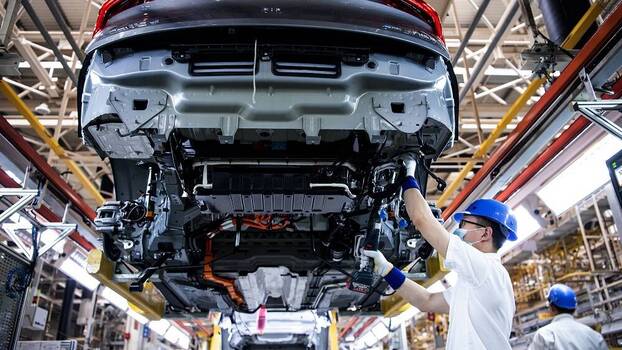
The global automotive industry is experiencing a profound transformation. Trends including the success of the electric drivetrain and digital driver assistance systems, the ever-closer connection and integration of vehicles and vehicle users with digital data networks, and the future of “autonomous driving” mark a turning point in automotive history. Even where, on closer inspection, many aspects of these trends are riddled with unresolved technological, legal, and infrastructural problems, the momentum can neither be ignored nor reversed. Or, as Georg Leutert, Director of IndustriALL, the Global Union for the Automotive and Aerospace Industry, put it in an interview: “No stone will be left unturned”.
Jörn Boewe writes for Der Freitag and is active in trade union education.
Johannes Schulten is a researcher at the Institute for Work and Qualification at the University of Duisburg-Essen.
In the world’s largest and fastest-growing car market, the People’s Republic of China, the decision has been made that the automobility of the medium-term future will be battery-electric. Electromobility — explicitly understood as being the continuation of (individual) automobility with the electric drivetrain — is considered a central strategy to mitigate climate change. It is also supported by corresponding political guidelines, especially in China, the European Union, and the US.
Capital markets are following the associated profit expectations, exemplified by the soaring price of shares in Tesla. When the company went public on 29 June 2010, stocks were trading at an opening price of 3.80 US dollars. On 4 November 2021, the share price reached its all-time high of 1,229.91 dollars. Over a prosperous 11 years, the share price has risen more than 300-fold. As of May 2022, Tesla’s market capitalization — the total value of all shares outstanding — was 786.98 billion US dollars. That is almost as much as the stock market value of the nine other top-ten car companies combined: Toyota, BYD, Volkswagen, Mercedes-Benz, BMW, General Motors, Ford, Stellantis, and Honda have a cumulative stock market value of 793.85 billion.
In fact, the prospect of a huge increase in demand for electric cars has triggered an upheaval in the industrial sector structure itself. Coming seemingly from nowhere, new companies have become world-renowned in a few years. Parts of the internal combustion engine-based industries, such as gearbox manufacturing, have to radically downsize their capacities, suppliers that are unable to implement alternative product ideas are disappearing. New key technologies such as the production of automotive batteries are occupying important places in the now shifting value chains and global production networks. As a result of advancing digitalization and connection to the internet, electronic components — which until recently played more of a supplementary role — are becoming key vehicle components, and raw materials for battery and semiconductor production are experiencing a thus far unprecedented demand.
Nevertheless, it is not just the material side of car production that is changing. In a complex way, the character of labour, industrial relations, and ultimately even the global balance of power between capital and labour are also shifting — and this in an industry that shaped capitalism as a leading industry for over a century. Employees in new sectors such as the mining sector, the chemical industry, and semiconductor production are being integrated into the value chains, while other sectors like information technology are being given a new and specific weight. New global players like Tesla and Geely are emerging in union-free parallel universes and are imposing new “workplace trends” that are (already) spilling over into the areas involving traditional car manufacturers that are (still) seeing high levels of unionization.
The current upheaval in the automotive industry is highly relevant for the Left, progressive social movements, and the global trade union movement: for more than a century, it was the field where the global workers’ movement found its strongest supporters and where it saw some of its most significant gains.
As such, the upheaval in the global automotive industry is raising a number of questions for trade unions, the Left, and the ecology movement: what will the ecological and social balance of this transformation look like — not as seen in the car glossy car sales brochures but in the reality of a highly globalized world economy? What are the consequences of the growing demand for conflict commodities like lithium, cobalt, and rare earth elements? What will be the impact of yet unresolved disposal issues? What about the human rights situation along the new supply chains? Will the relocation of production capacities to regions with low wages and weak labour laws that has been ongoing for almost two decades be accelerated by the ramp-up of electromobility? Will core areas of the new leading global industries remain union-free in the long term or are we seeing the beginnings of new class organization? Which progressive social actors are involved in this transformation process, what are their perspectives, political goals, and possible courses of action?
The Transformation of the Global Automotive Industry, a new study from the Rosa Luxemburg Foundation’s Geneva Office, takes on these questions by laying out the key trends, explaining what they mean, and putting forward concrete strategic proposals for the workers’ movement today.